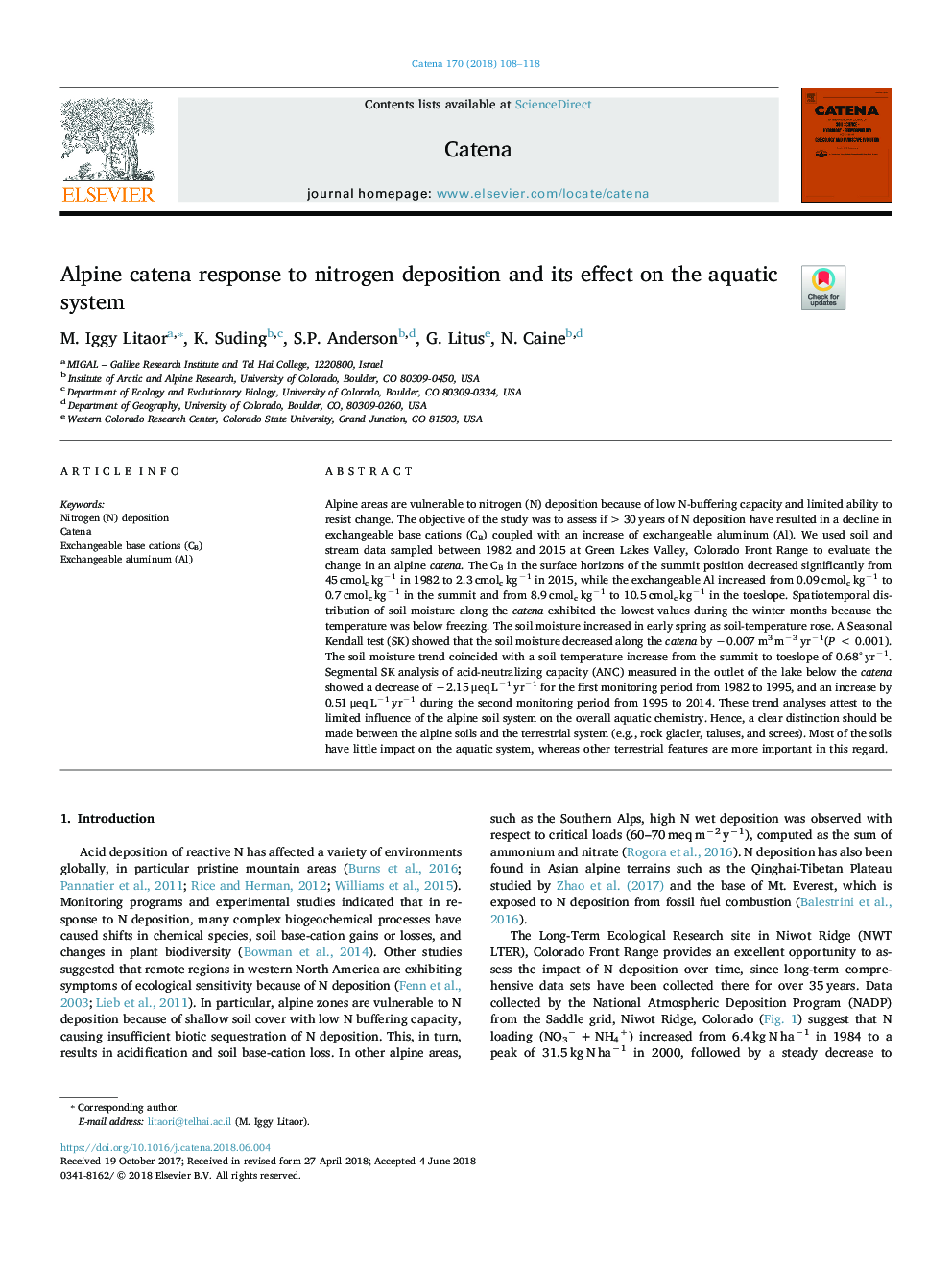| Article ID | Journal | Published Year | Pages | File Type |
|---|---|---|---|---|
| 8893379 | CATENA | 2018 | 11 Pages |
Abstract
Alpine areas are vulnerable to nitrogen (N) deposition because of low N-buffering capacity and limited ability to resist change. The objective of the study was to assess if >30â¯years of N deposition have resulted in a decline in exchangeable base cations (CB) coupled with an increase of exchangeable aluminum (Al). We used soil and stream data sampled between 1982 and 2015 at Green Lakes Valley, Colorado Front Range to evaluate the change in an alpine catena. The CB in the surface horizons of the summit position decreased significantly from 45â¯cmolcâ¯kgâ1 in 1982 to 2.3â¯cmolcâ¯kgâ1 in 2015, while the exchangeable Al increased from 0.09â¯cmolcâ¯kgâ1 to 0.7â¯cmolcâ¯kgâ1 in the summit and from 8.9â¯cmolcâ¯kgâ1 to 10.5â¯cmolcâ¯kgâ1 in the toeslope. Spatiotemporal distribution of soil moisture along the catena exhibited the lowest values during the winter months because the temperature was below freezing. The soil moisture increased in early spring as soil-temperature rose. A Seasonal Kendall test (SK) showed that the soil moisture decreased along the catena by â0.007â¯m3â¯mâ3â¯yrâ1(Pâ¯<â¯0.001). The soil moisture trend coincided with a soil temperature increase from the summit to toeslope of 0.68°â¯yrâ1. Segmental SK analysis of acid-neutralizing capacity (ANC) measured in the outlet of the lake below the catena showed a decrease of â2.15â¯Î¼eqâ¯Lâ1â¯yrâ1 for the first monitoring period from 1982 to 1995, and an increase by 0.51â¯Î¼eqâ¯Lâ1â¯yrâ1 during the second monitoring period from 1995 to 2014. These trend analyses attest to the limited influence of the alpine soil system on the overall aquatic chemistry. Hence, a clear distinction should be made between the alpine soils and the terrestrial system (e.g., rock glacier, taluses, and screes). Most of the soils have little impact on the aquatic system, whereas other terrestrial features are more important in this regard.
Keywords
Related Topics
Physical Sciences and Engineering
Earth and Planetary Sciences
Earth-Surface Processes
Authors
M. Iggy Litaor, K. Suding, S.P. Anderson, G. Litus, N. Caine,
